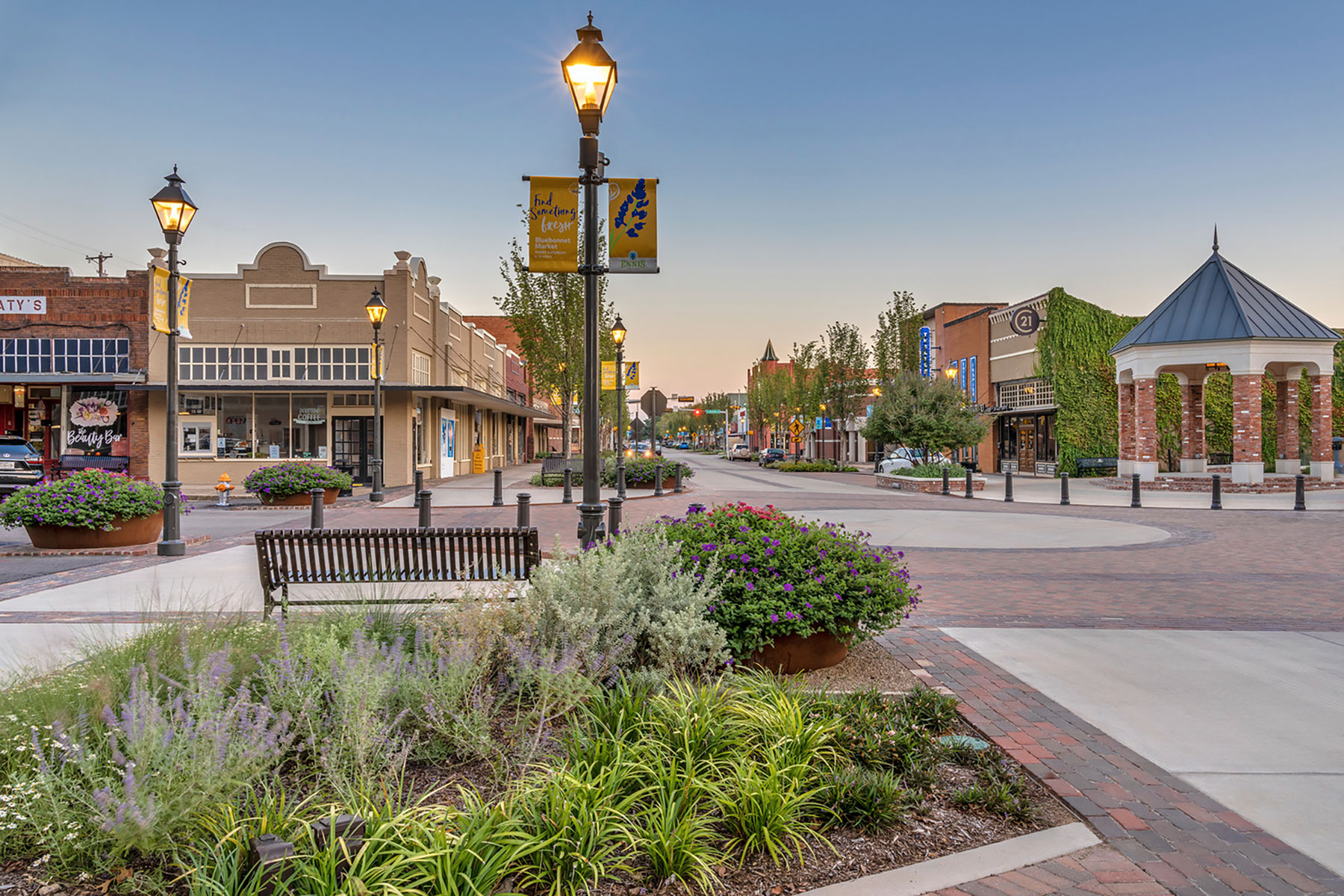Mother Nature Gets Things Moving
The small township of Ennis is brimming with historical charm. Its downtown district encompasses eight city blocks and includes more than 80 buildings built during the city’s early railroad days. When an EF1 tornado touched down in the Historic District in 2013, damaging many of its homes and businesses, the City of Ennis decided it was time for a redo. The Downtown Master Plan laid out the City’s strategic vision for revitalizing the town’s 100-year-old streets and aging infrastructure, with an overarching goal to reestablish downtown Ennis as a shopping, dining and entertainment destination.
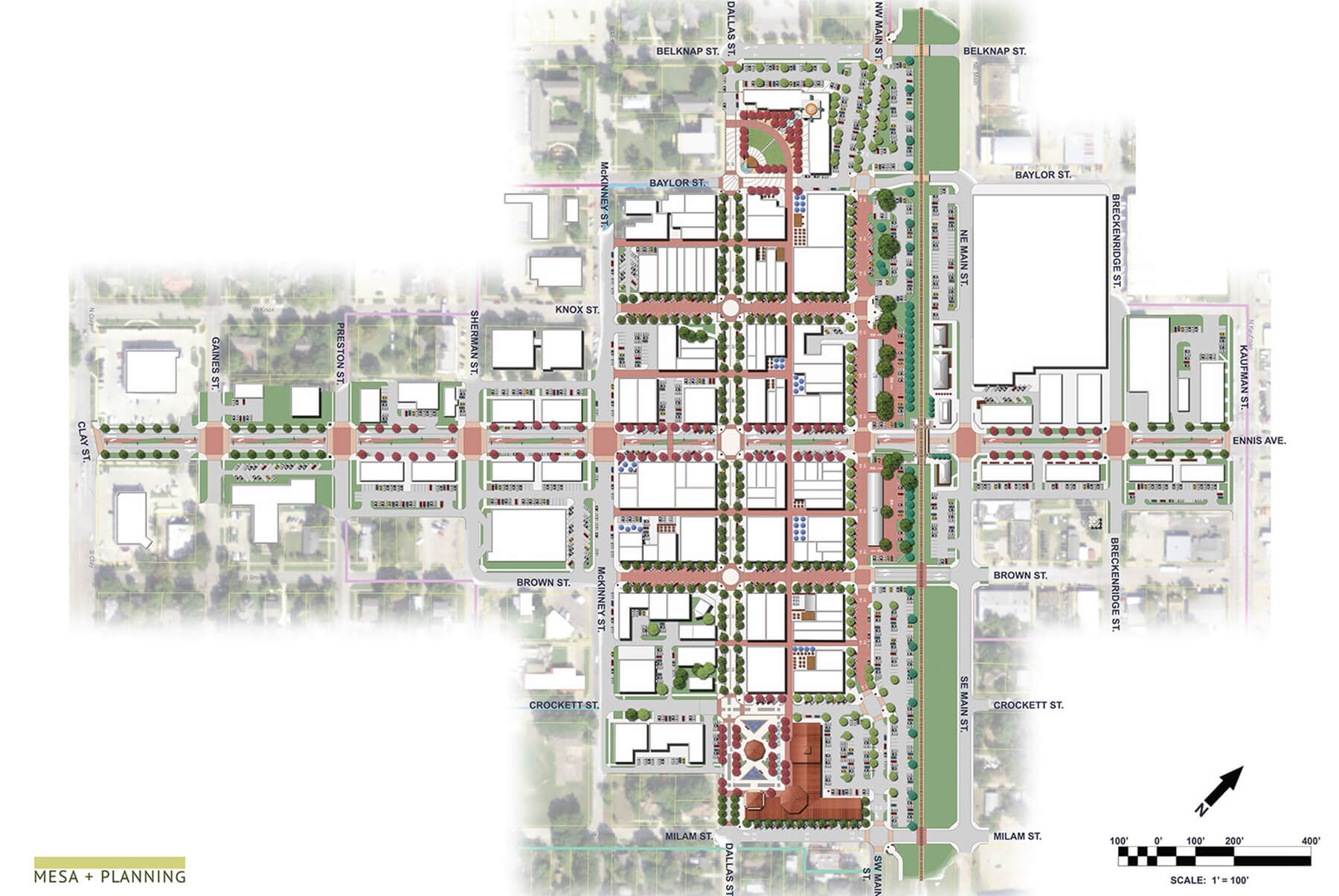
Harnessing the Power of Teamwork
In a true team effort, MESA provided the landscape design for Phase I of the master plan implementation, while we supported their efforts by providing water, wastewater and stormwater utilities design as well as civil and site design. Both Gresham Smith and MESA actively partnered with the City throughout design and construction. Our involvement in the project extends to additional phases that will be implemented over the next five years, allowing the City to stage project funding.
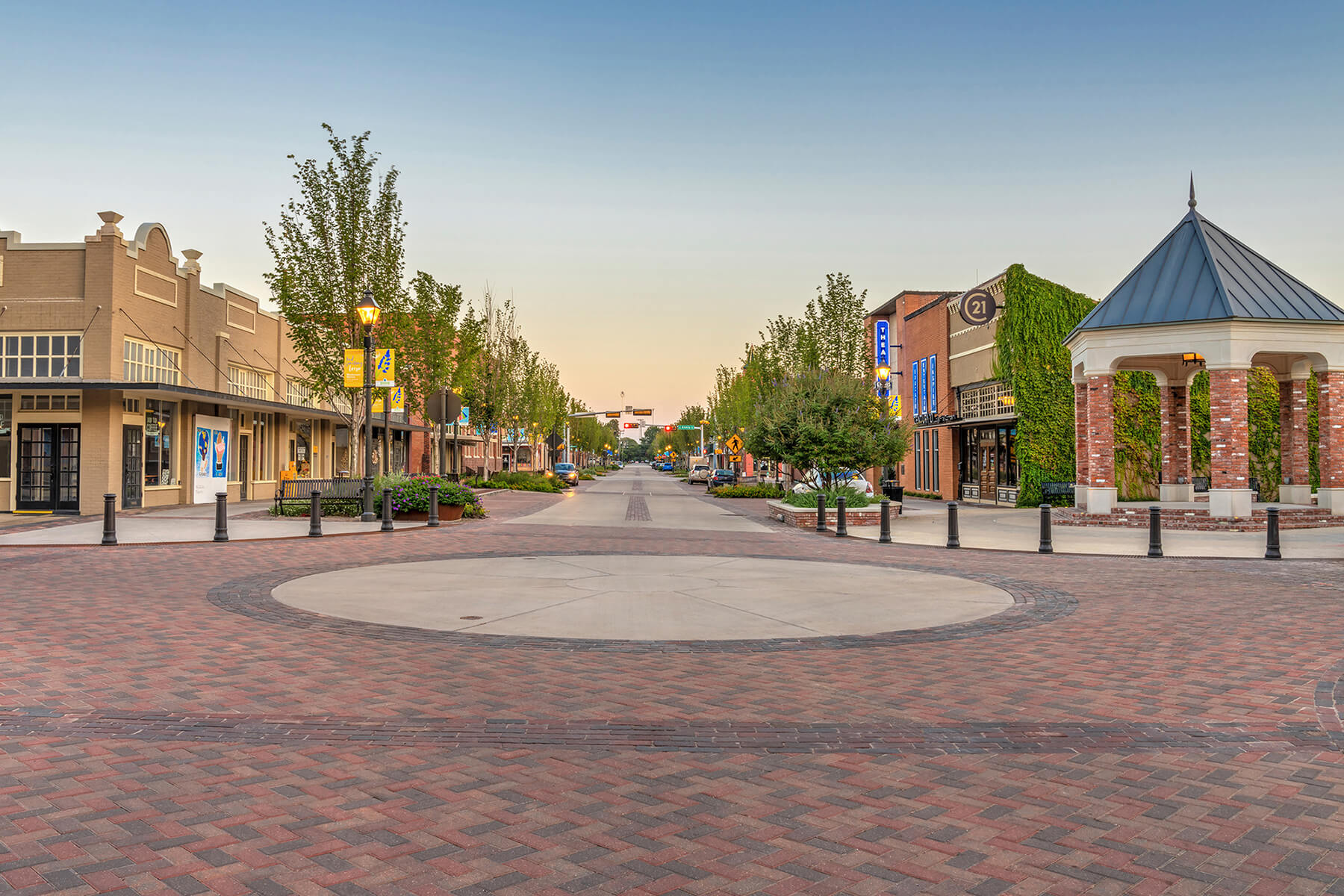
A Walkable Streetscape
This Phase I implementation changes the streets of Ennis quite a bit! Originally constructed for horse-drawn carriages—with 2-foot differences in the sidewalk and street elevations in certain locations—the existing streetscape offered little to those who wanted to enjoy the historic town by foot. The project transforms downtown’s sidewalks into an ADA-compliant, curbless streetscape that vastly improves the pedestrian experience. Because this had clear impacts on stormwater management, we developed microscale grading plans to support the master plan vision of walkability and a curbless design, while providing adequate drainage and stormwater collection to minimize the risk of localized ponding and flooding.
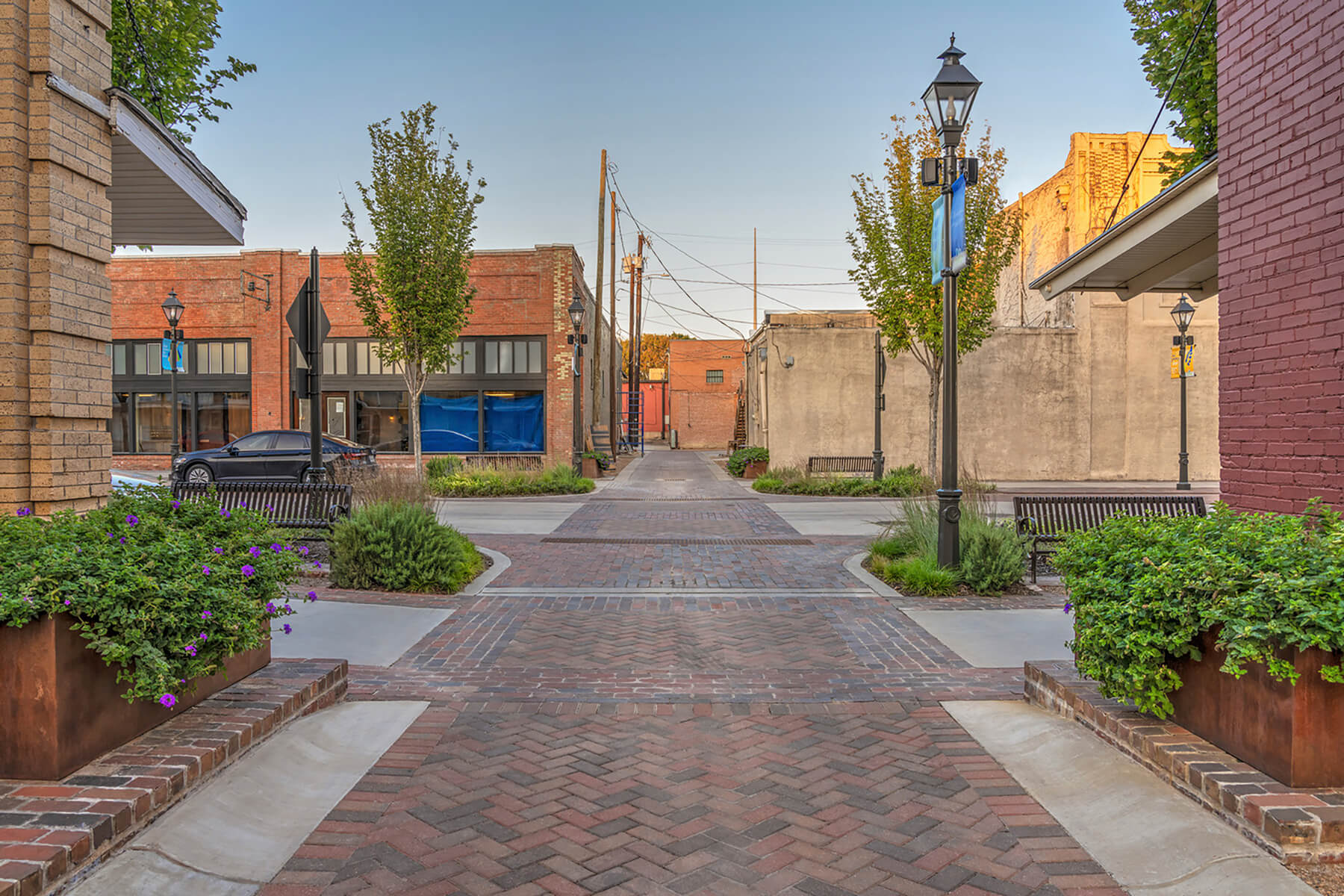
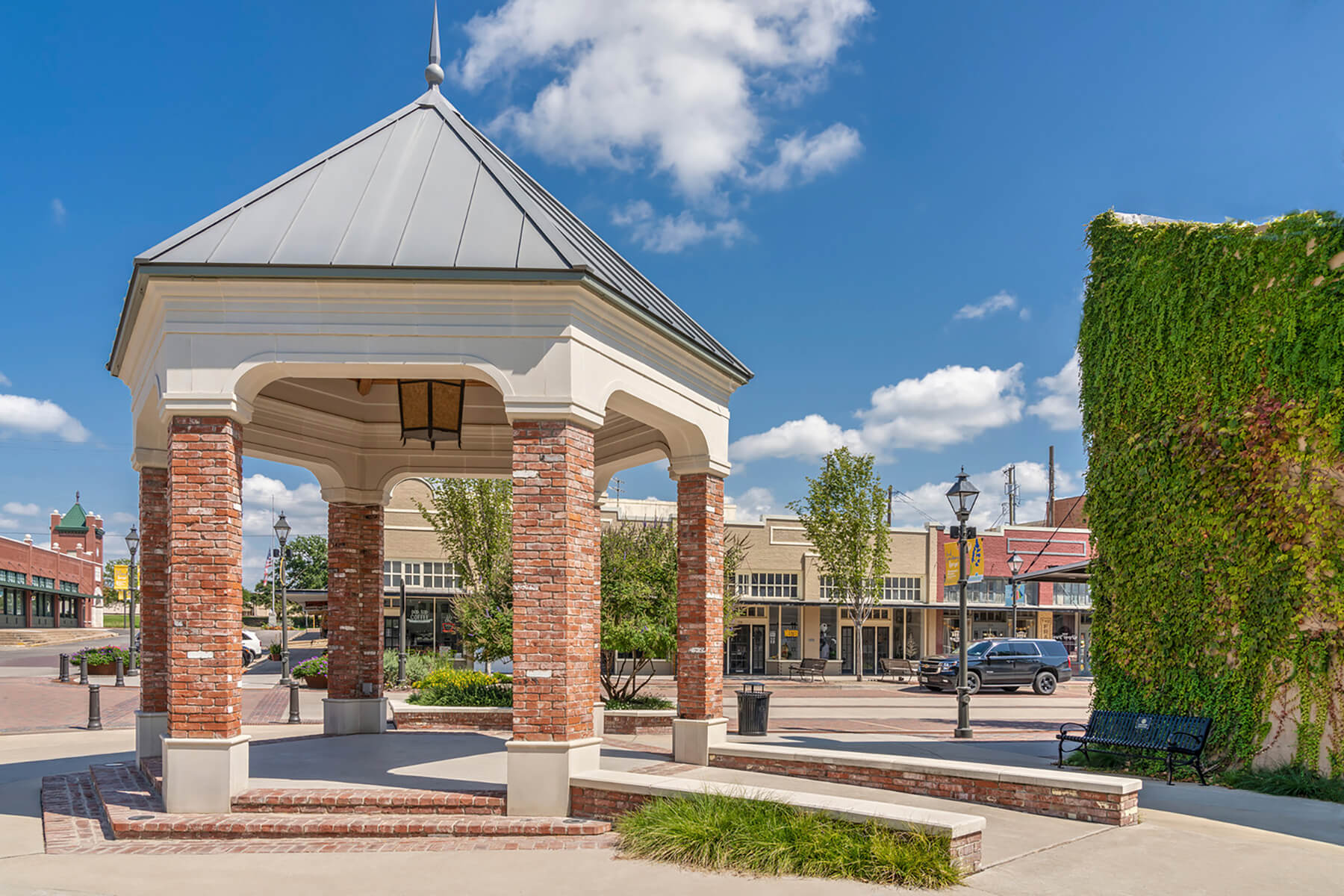
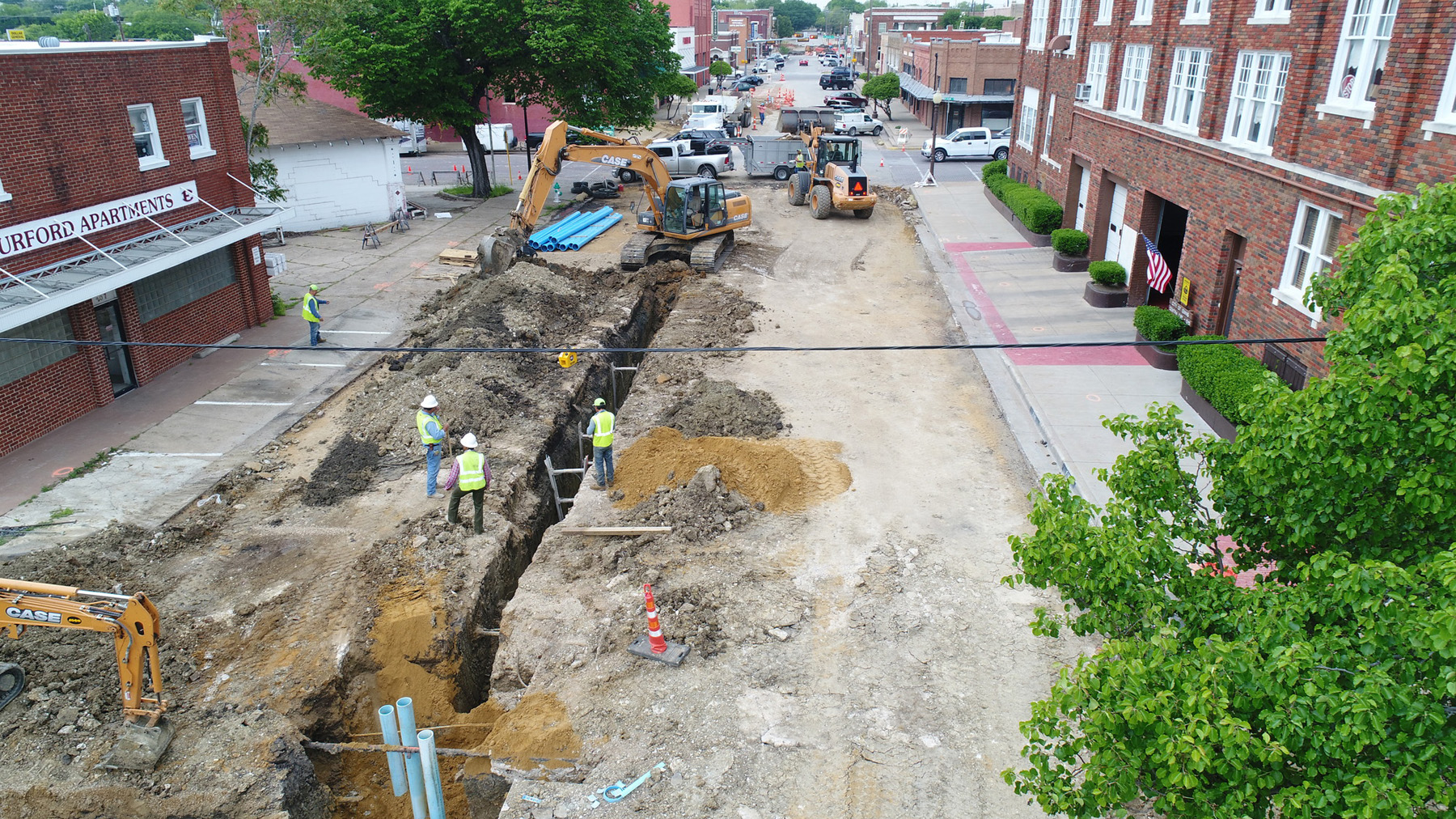
What Lies Beneath
Deep below Ennis’ turn-of-the-century streets, its 100-year-old infrastructure needed 21st century upgrades within an extremely small 19th century footprint. Given the limited historical record documentation, Gresham Smith relied on GIS, extensive field investigations, Civil 3D software and City employee knowledge to help analyze the existing conditions of the old clay sewer piping and cast iron water piping system. Every now and then, however, unforeseen conditions such as old utilities presented some unexpected surprises, proving to be one of the project’s most significant challenges.
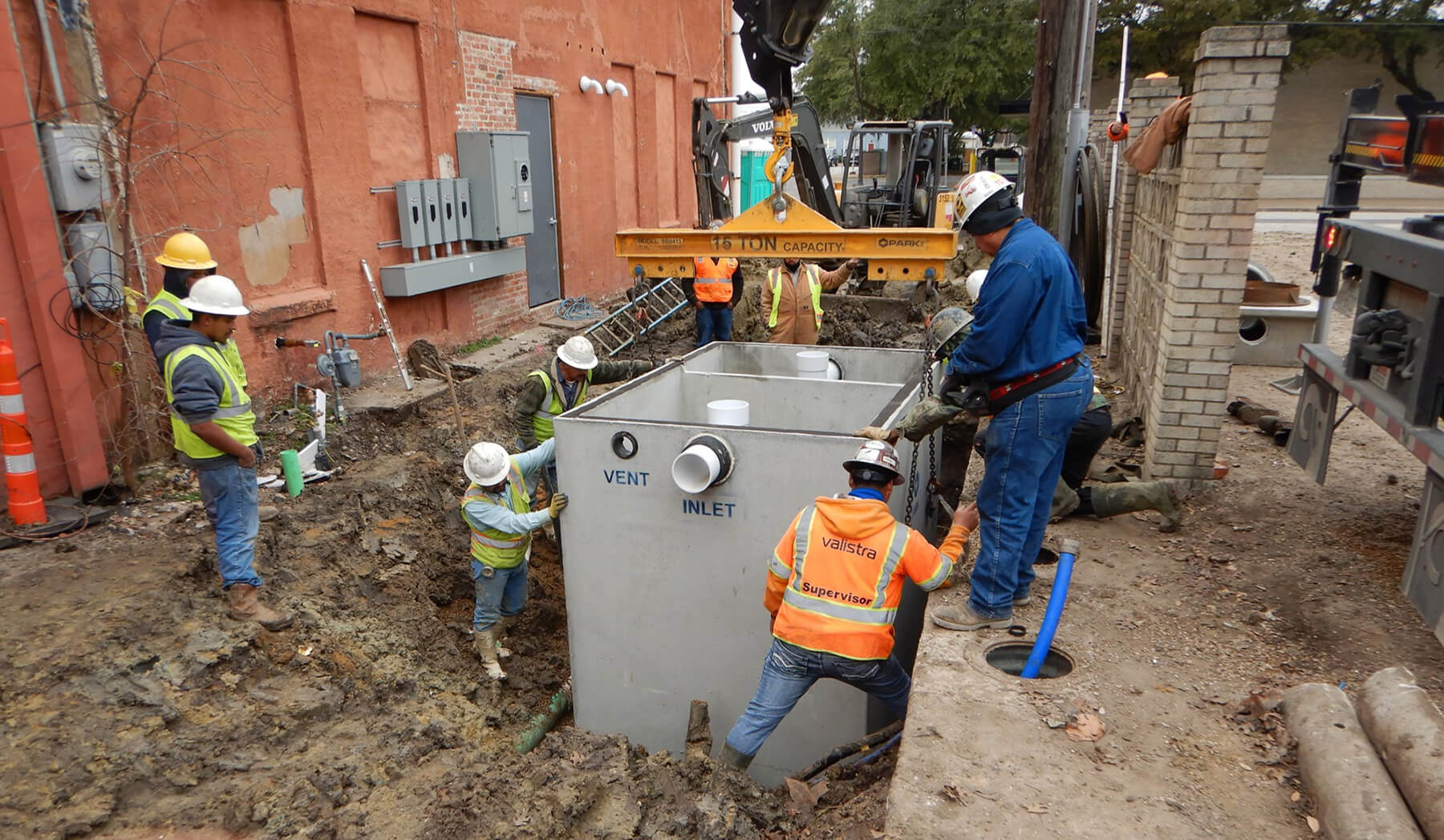
A Tight Squeeze!
We needed to determine routing and fit water, sewer and utilities all within 20-foot-wide alleys bordered at right-of-way lines with historic buildings. We overcame these significant space constraints to increase water distribution and wastewater collection system capacity as well as accommodate the service needs of future development and redevelopment. Our infrastructure upgrades included the installation of centralized grease traps, making it possible for restaurants to locate almost anywhere within the downtown core, providing a major economic incentive for restaurateurs.
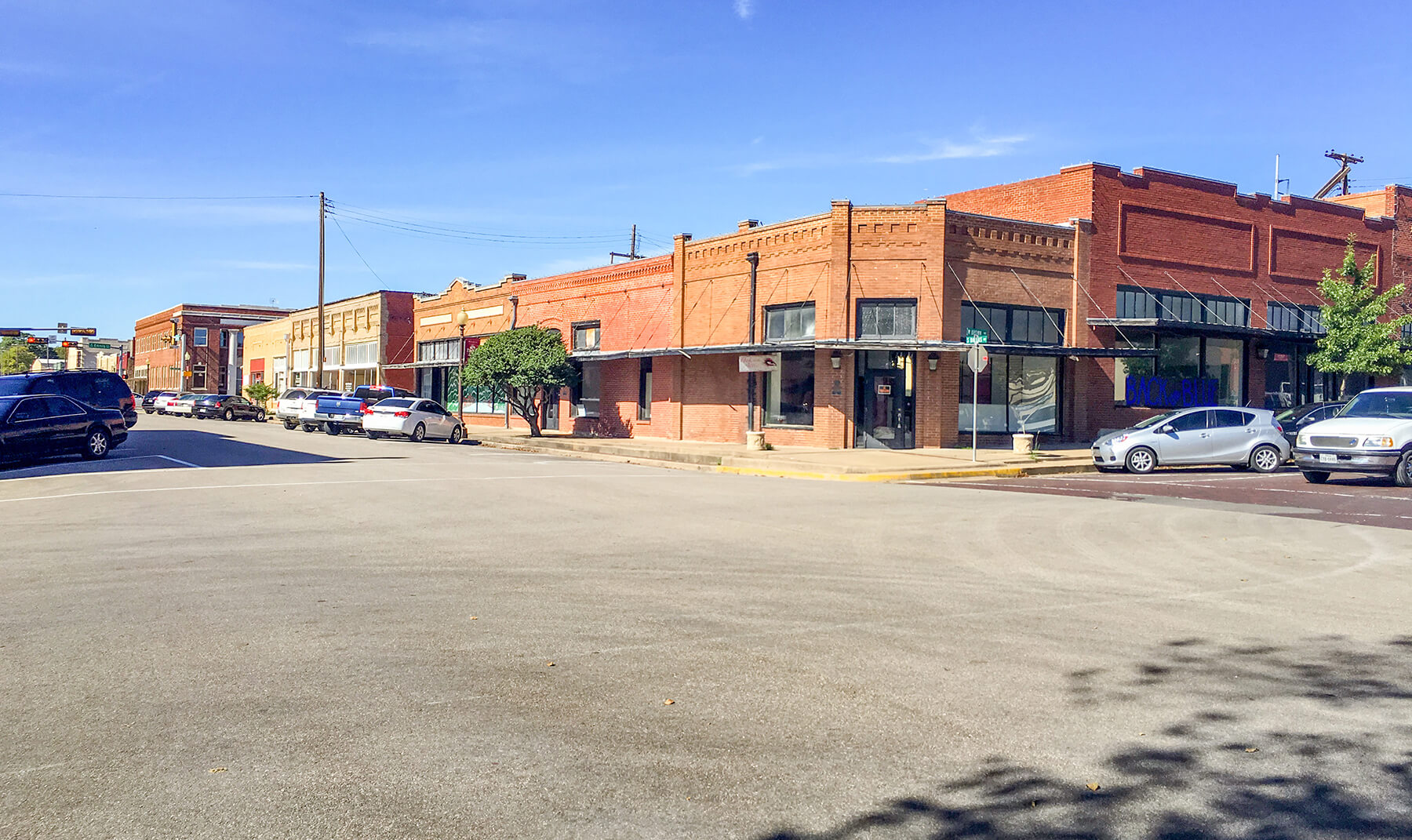
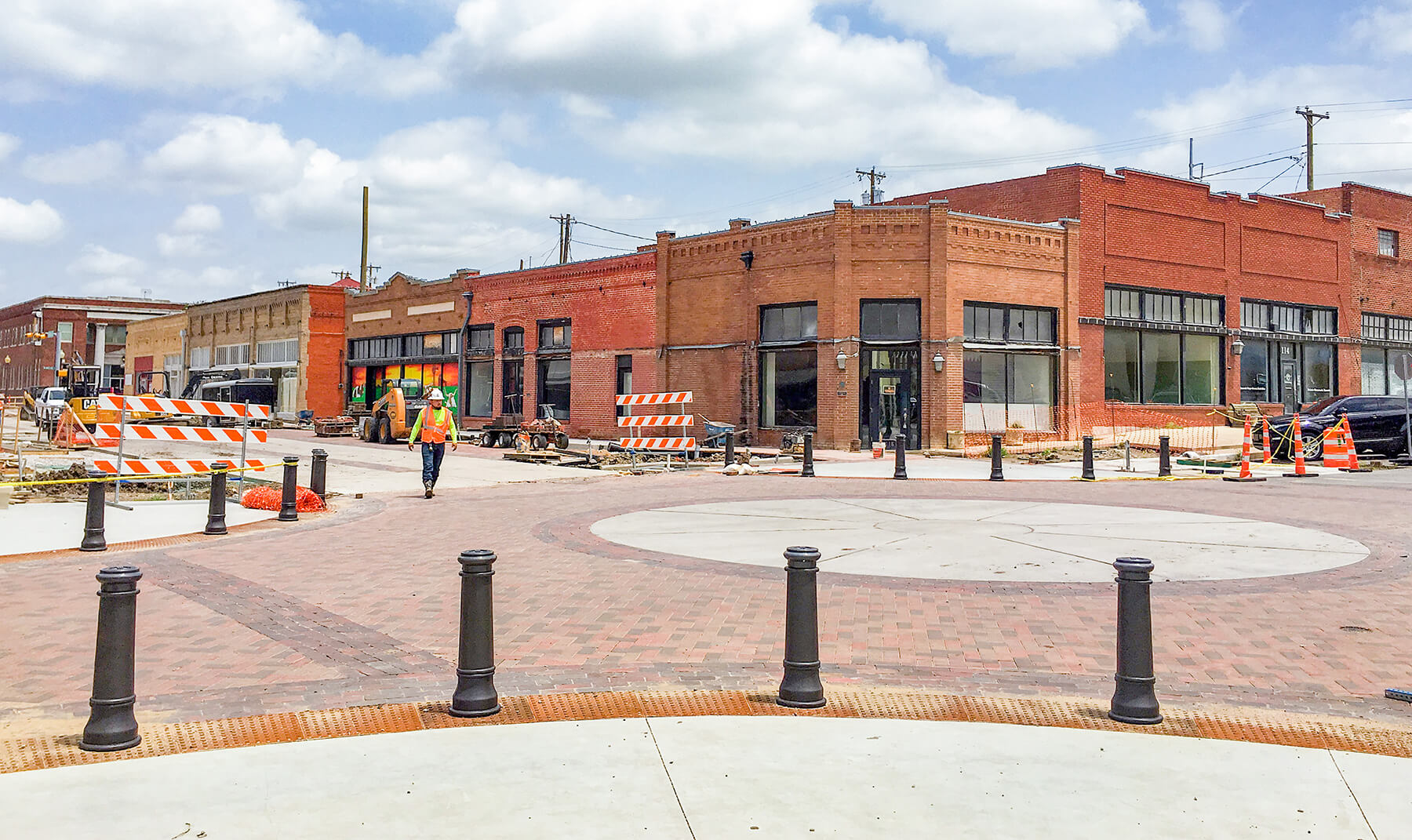
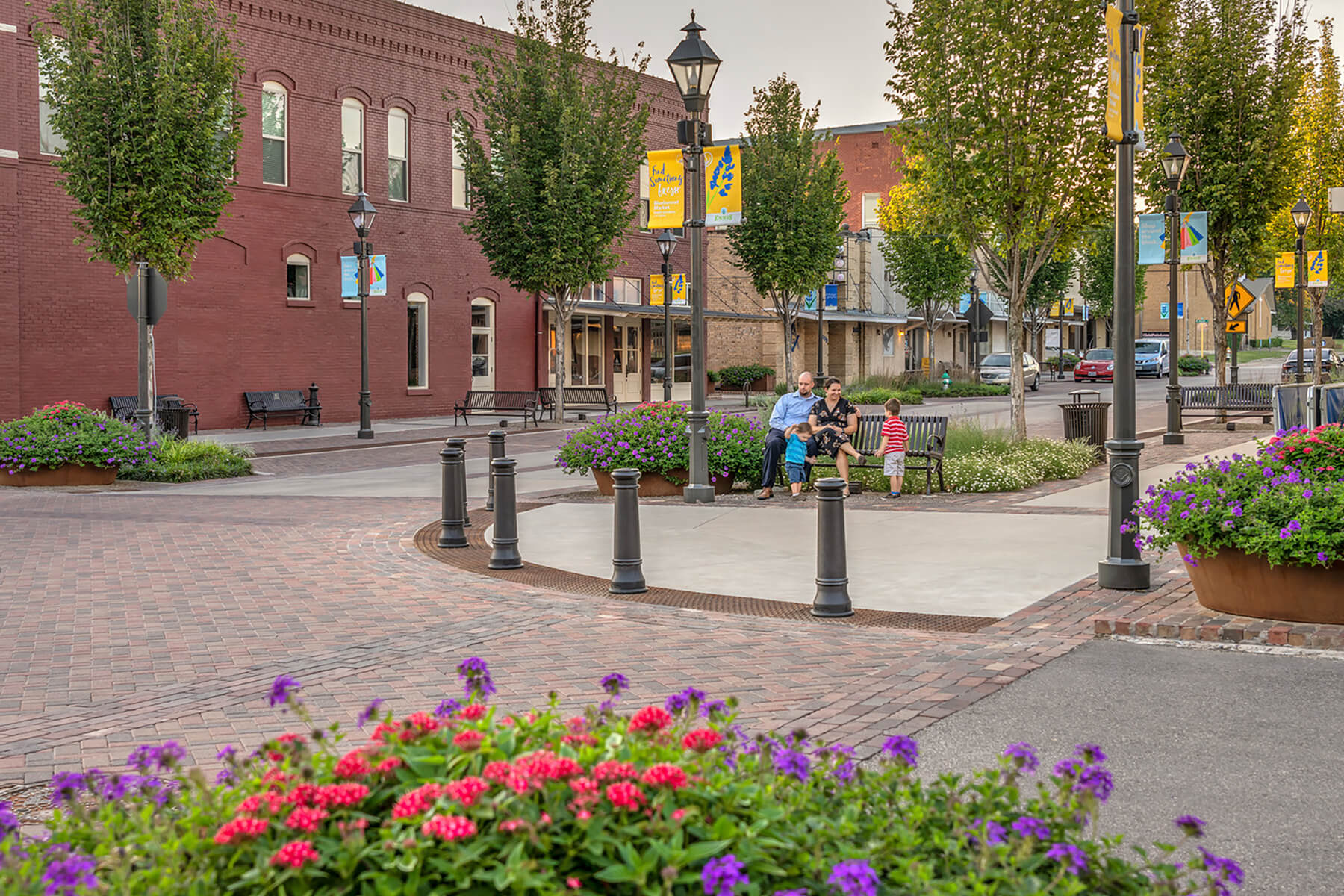
A Success Story in the Making
Serving as a road map for future development and economic renewal, the Phase I implementation of the Downtown Master Plan improves Ennis’ vital water, wastewater and stormwater infrastructure while preserving its historical streetscape atmosphere. As a result of the master plan and implementation, developers have already begun purchasing and redeveloping some of the city’s historic buildings, revitalizing the downtown business district.
